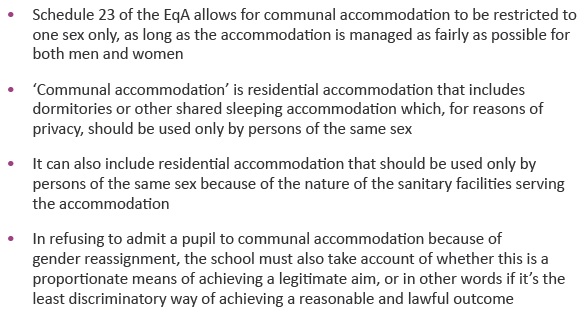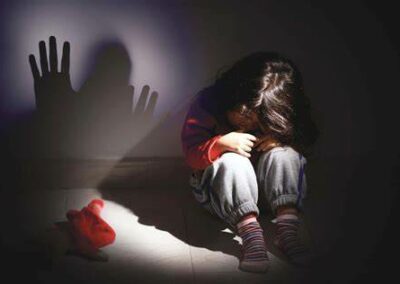https://www.transgendertrend.com/the-vale-of-glamorgan-transgender-inclusion-schools-toolkit/
The Vale Of Glamorgan Transgender Inclusion Schools Toolkit
The Vale of Glamorgan Transgender Inclusion Schools Toolkit is due to be adopted by the local council on Monday. It is already in use in Merthyr Tydfil and is set to be adopted in Rhondda.
The insulting stereotypes on the cover and the title itself give some indication of the confusing message to children within the contents. “The body we are born into does not define who we are!” sounds like a positive statement – whether we are male or female should not restrict what we can do or dictate our interests, we should be free to be whoever we want to be. But it is misleading in this context. Correct, our bodies don’t define who we are but they do define what we are: male or female, boy or girl.
Boys and girls are male or female children who exist in the world. What the headline in this context actually means is that having a male body is no restriction to being a girl – in which case ‘girl’ has been redefined as a child of either sex with a particular personality type. What initially appears to be challenging gender stereotypes in fact reinforces them as the reality, while biological sex is relegated to a position of irrelevance.
It is important to recognise the difference between ‘challenging gender stereotypes’ and ‘blurring the distinction between the sexes.’
It is worrying that guidance is being recommended which forces schools to adopt new ideology-based language and definitions of words. Words have meanings. ‘Gender’ and ‘sex’ have distinct definitions which should not be used interchangeably to mean the same thing, as they are in this guidance. The replacement of the word ‘girls’ with ‘cisgendered females’ redefines girls as a ‘gender identity’ rather than a sex, taking away their recognition as a distinct group protected as the female sex under the Equality Act 2010. The redefinition of homosexuals as people whose sexual orientation is towards the ‘same gender’ rather than same-sex attraction fundamentally alters the meaning of ‘gay’ and ‘lesbian.’
In both cases it is the most vulnerable children who are affected: the gay and lesbian children who are being influenced to understand themselves as ‘straight’ (but in the wrong body) and girls whose rights to single-sex spaces are taken away, along with the right to have any boundaries with the male sex or to define their own reality without being seen as ‘transphobic.’
It is of great concern that ‘gender variant’ is being conflated with ‘trans’ and that children are being taught a new model of understanding their non-conformity as being ‘born in the wrong body.’ Teachers especially need to understand the social contagion that has led to unprecedented numbers of teenage girls, mostly lesbians, redefining themselves according to this model after learning about it from Tumblr and trans YouTube vloggers. Rapid Onset Gender Dysphoria is a completely new phenomenon: there needs to be a debate about the numbers of young lesbians disfiguring themselves with harmful breast binders and planning their double mastectomies. Teachers should not be expected to unquestioningly support pupils to self-harm as this guidance suggests.
We cannot base schools guidance on least likely outcomes. Transgender youth organisations frighten parents with the threat that their child may commit suicide if not allowed to ‘transition’ although they present no evidence to support that contention; in fact by far the most likely outcome is that a child’s gender dysphoria will naturally resolve without intervention. Around 80% of children with gender dysphoria will grow out of it during puberty and we can’t know which ones; gender confusion in childhood is far more predictive of lesbian or gay sexual orientation in adulthood rather than transsexualism.
Transgender adults represent the minority outcome and yet we are basing schools policies on the assumption that all these children are transgender. Once we label a child ‘transgender’ we set them on a pathway of social transition followed almost inevitably by a medical pathway very few come off once they start. If they start in early puberty they are likely to lose both fertility and sexual function. We don’t yet know all the outcomes of this medical treatment as this is so new, so these children are unwittingly taking part in a medical experiment.
This schools guidance does not reflect the thoughtfulness and need for caution expressed by the clinical professionals at the Tavistock gender clinic nor the ‘watch and wait’ approach advocated by The Royal College of Psychiatrists. Teachers are left uninformed about the current debates in this area amongst professionals in the field.
They may also be unaware that the guidance is misleading on Equality law regarding single-sex facilities, sports and accommodation. Girls have rights and protections based on their sex as females which this guidance makes no reference to.
This is what the guidance says about sports:
Schedule 3 of the Equality Act allows for separate single-sex services where privacy is an issue and a member of one sex might reasonably object to the presence of someone of the opposite sex. The EHRC specifies the application of this guidance in schools in their Technical Guidance:

The schools toolkit gives this advice about shared accommodation on residential trips:

This is what Equality law actually says:
This is what Equality law actually says:

At no point in the Vale of Glamorgan transgender inclusion schools toolkit are the rights and protections of girls even considered, nor the views of their parents sought.
Given the shameful prevalence of sexual harassment and abuse of girls in schools, to take away existing protections and put them at further risk through so-called ‘gender neutral’ (but in reality ‘mixed sex’) toilets, changing-rooms and overnight accommodation is a willful act of negligence and dereliction of duty of care towards girls. Any guidance recommended for schools must be subject to normal levels of scrutiny before recommendation for use, but it seems that in the case of transgender inclusion schools toolkits one lobby group has been given free reign to direct policy without challenge.
Schools should absolutely be supporting children and adolescents who are suffering gender dysphoria or struggling with identity issues and schools need robust policies to ensure that these children are not bullied. However, this should not be done by enforcing the beliefs of one group onto everyone, or taking away the right to privacy and sexual boundaries of every other child in the school. The facts of biological sex differences are the basis of protection and safeguarding of children and no school policy should be attempting to obscure them.
Transgender inclusion schools toolkits are being written by transgender organisations and adopted by local councils all over the UK. Since writing about a selection of them last year, new guidance has been published for Forth Valley and Barnsley and there has been a new toolkit created with contributions from County Councils in Birmingham, Warwickshire, Kent, Sheffield, Oxfordshire, Doncaster, Nottinghamshire, Barnsley and Leicestershire, which is based on the Brighton & Hove Allsorts toolkit, the final draft of which was approved by Gendered Intelligence.
All parents are stakeholders and have the right to be informed of school policies which will affect their child. Please contact your child’s school and ask them which guidance they are using. Our schools pack protects the rights of all children and advocates a more cautious, thoughtful approach towards children and adolescents who are struggling with gender issues. If you would like to share this with your child’s school you can download it here: bit.ly/GNCpack.






